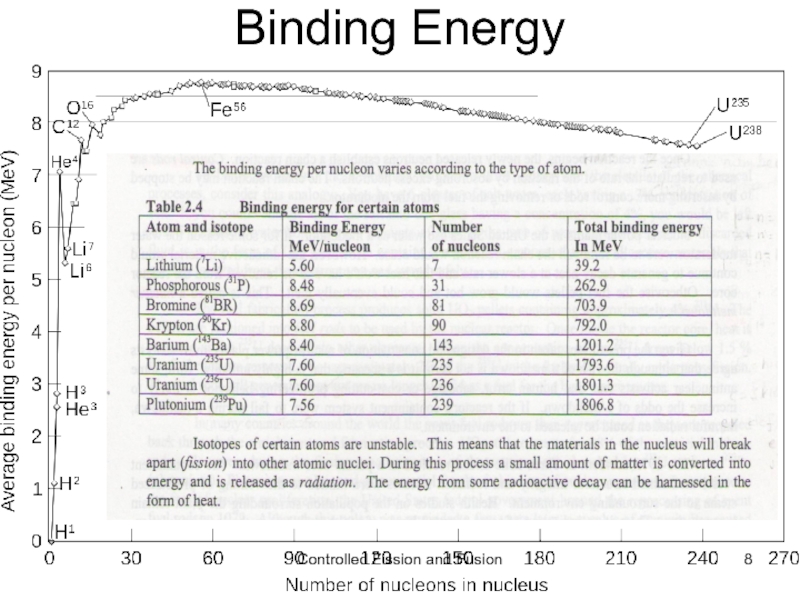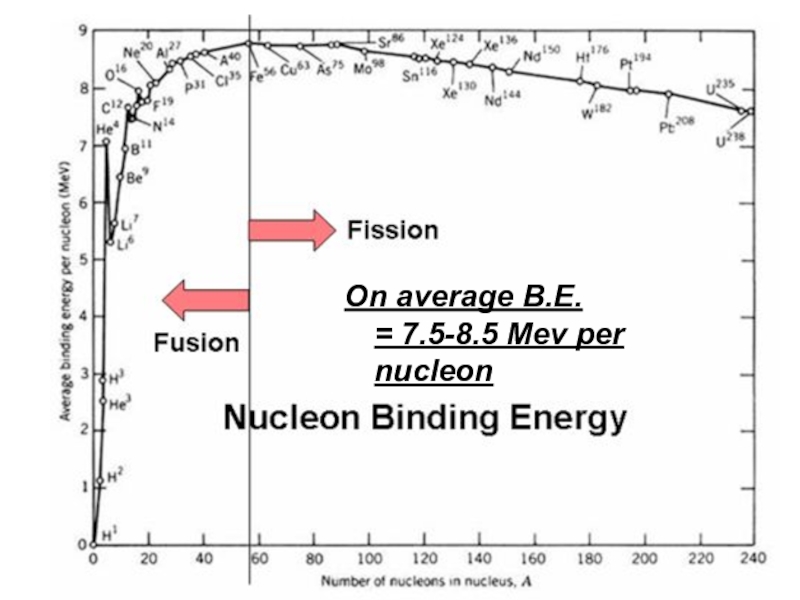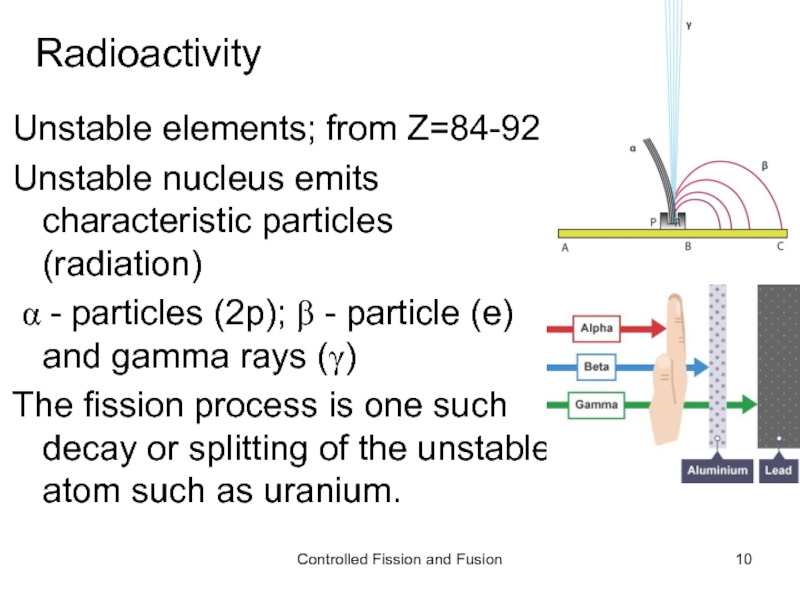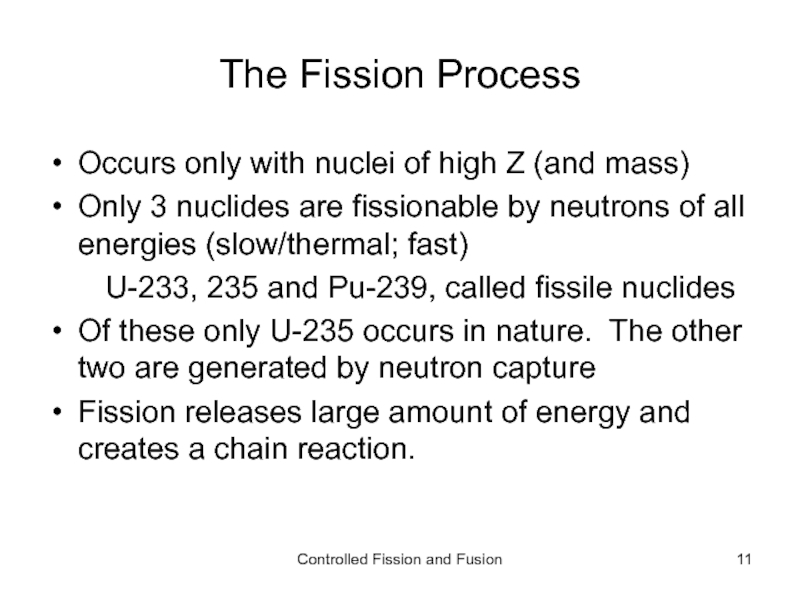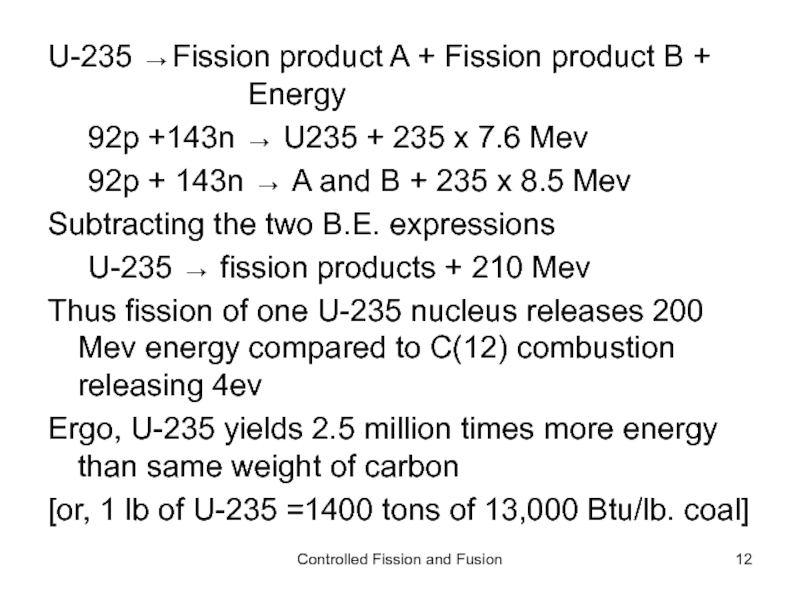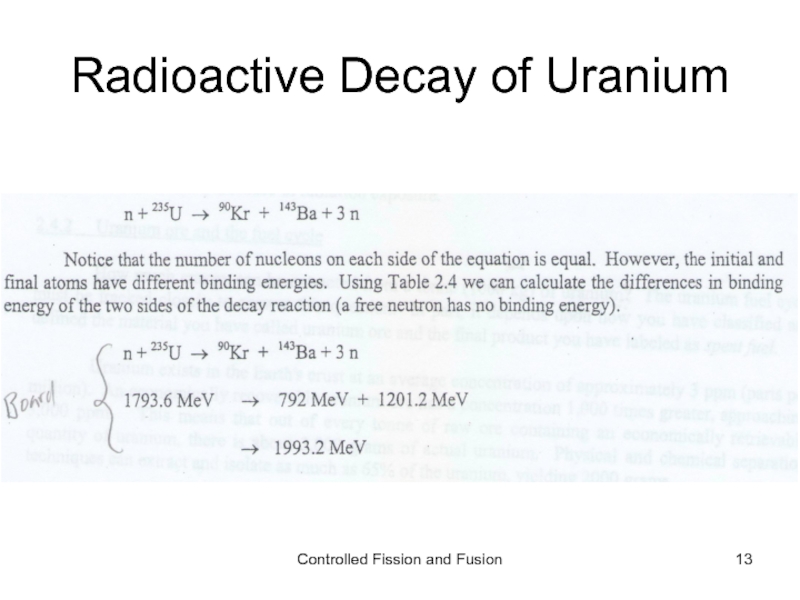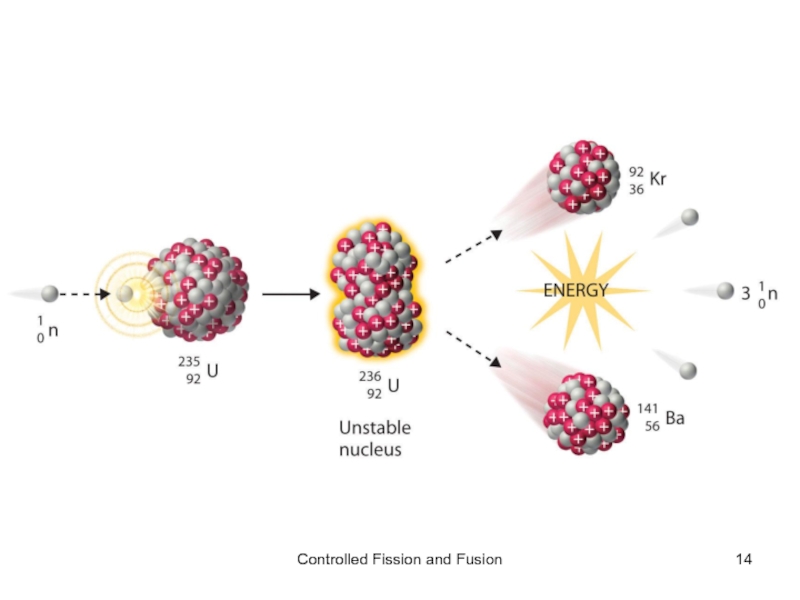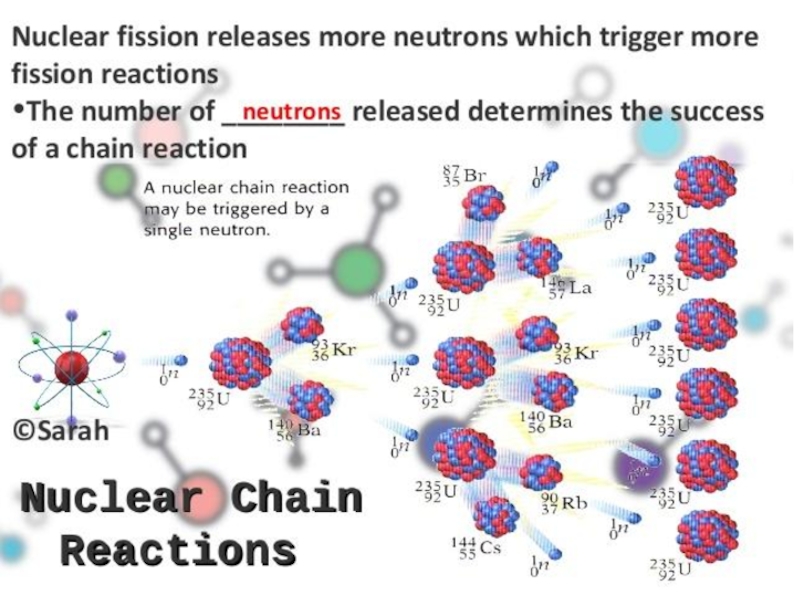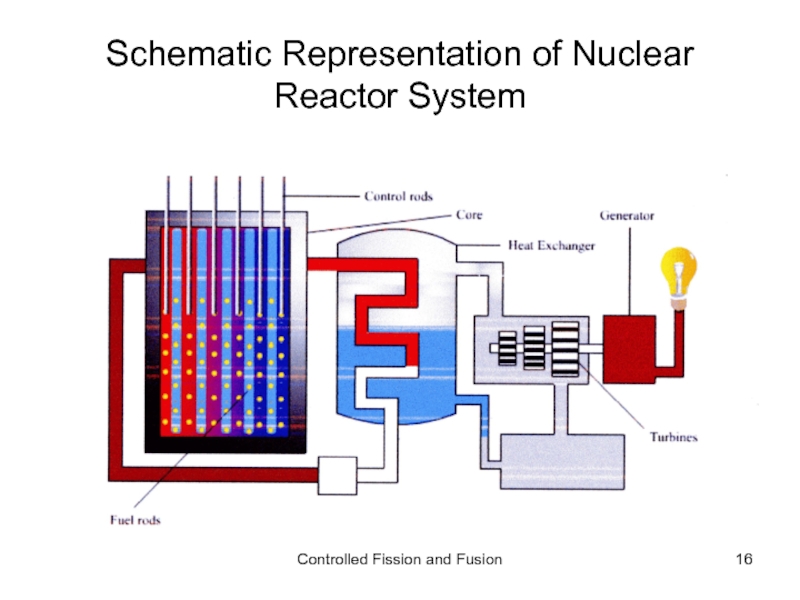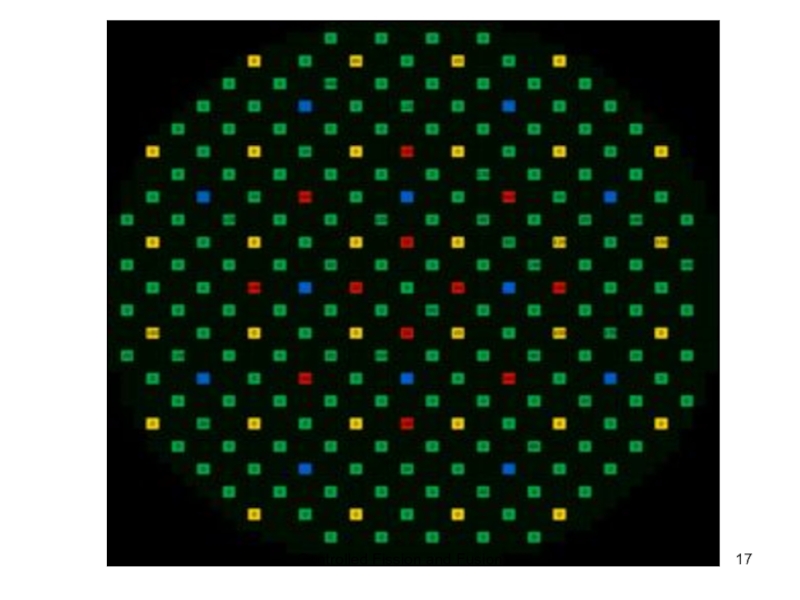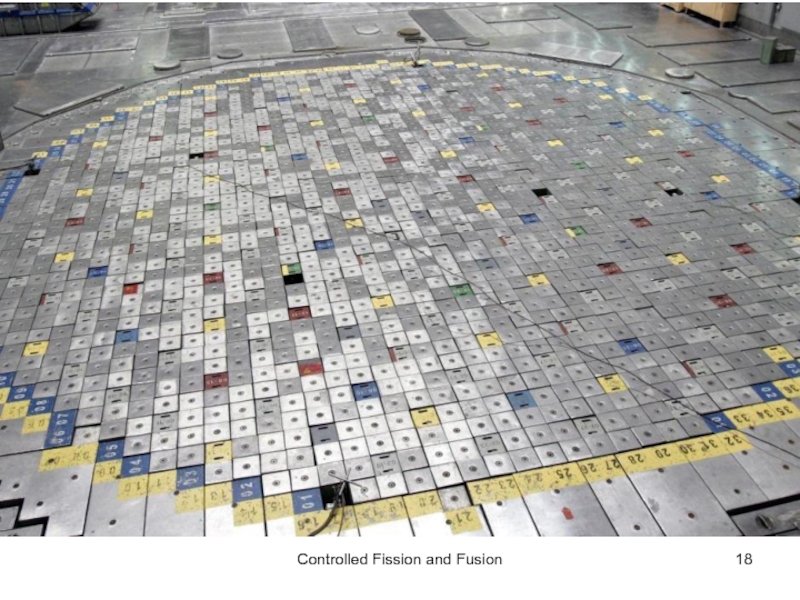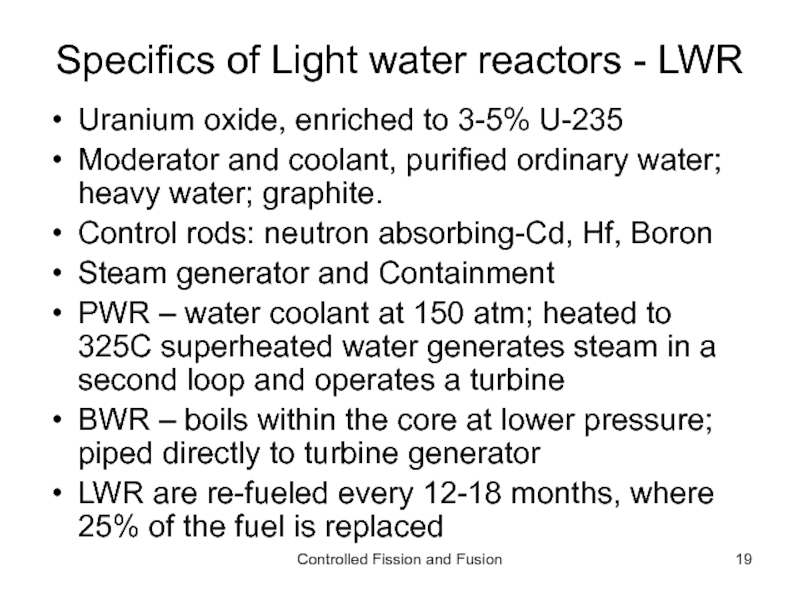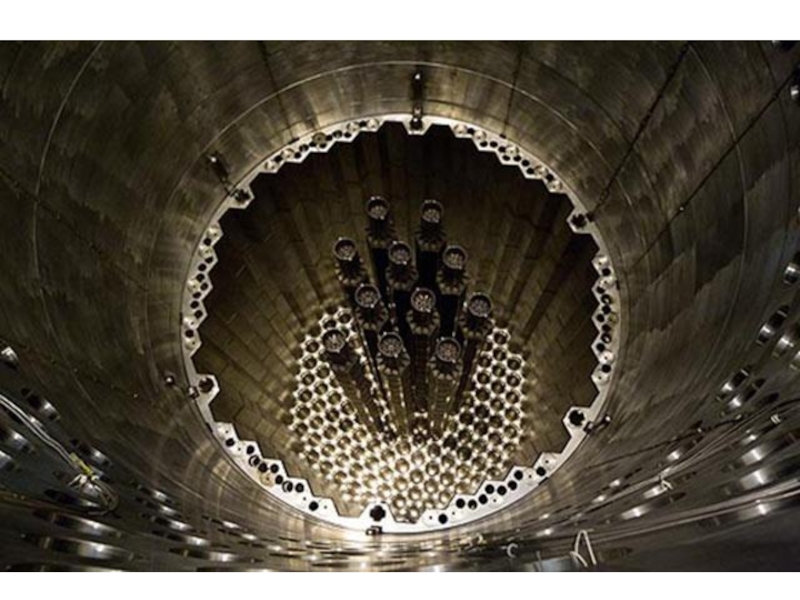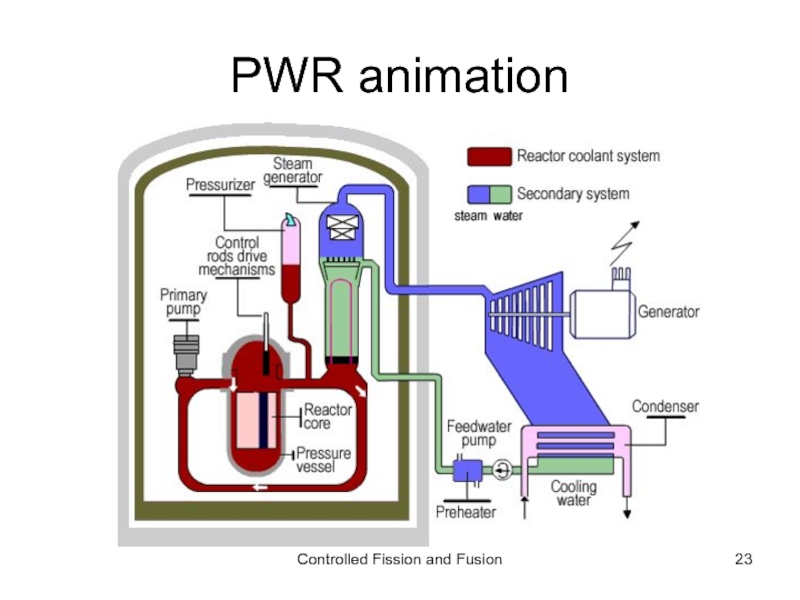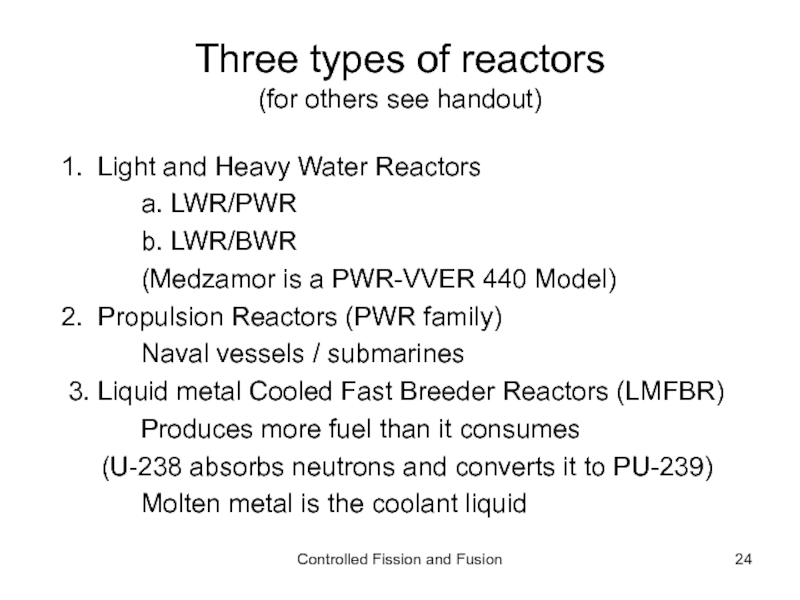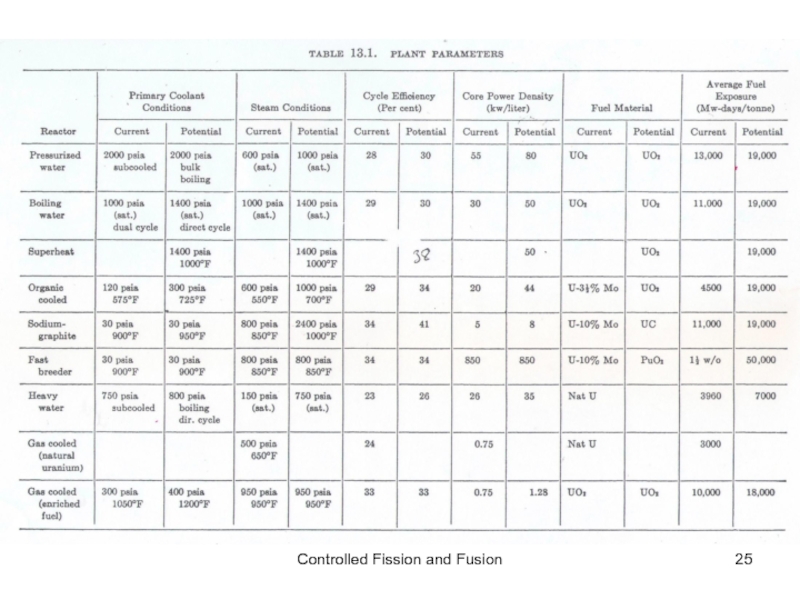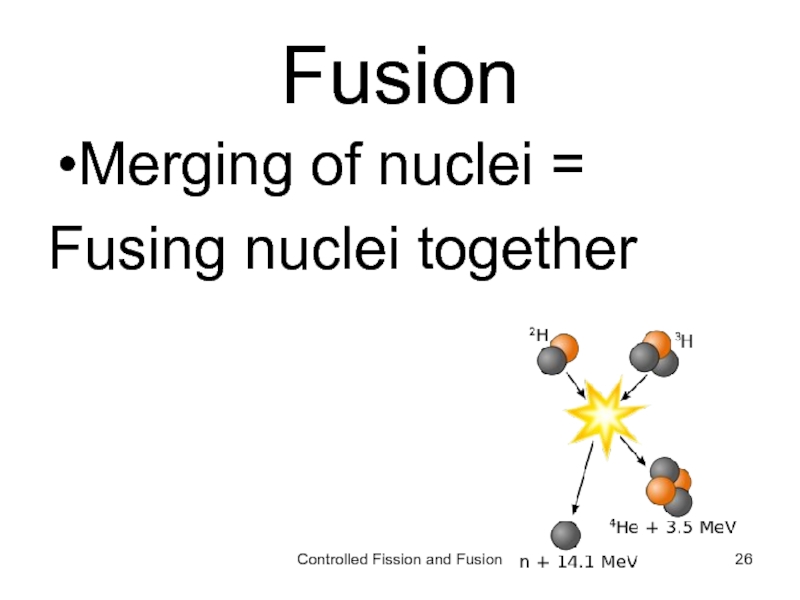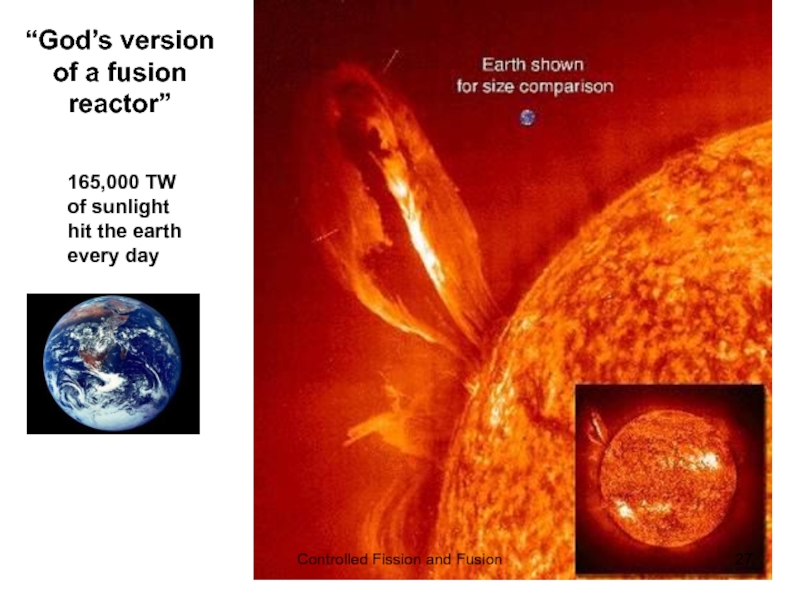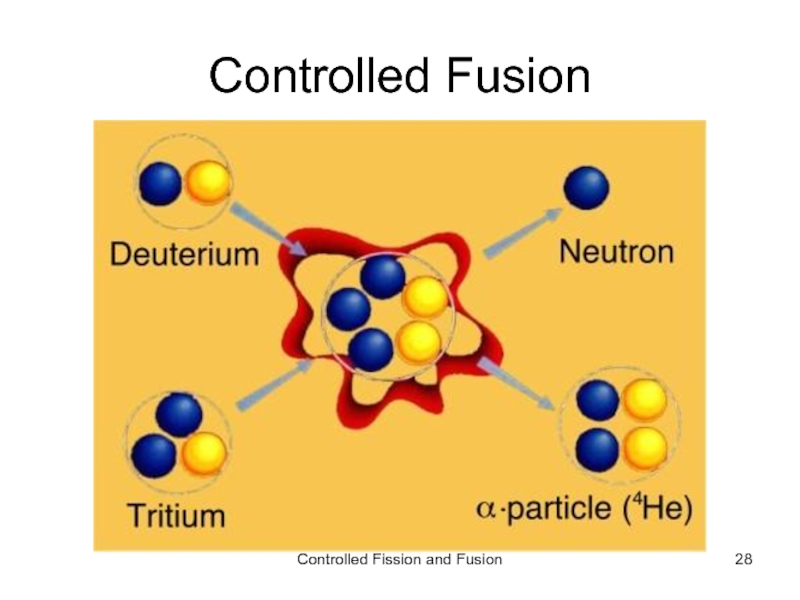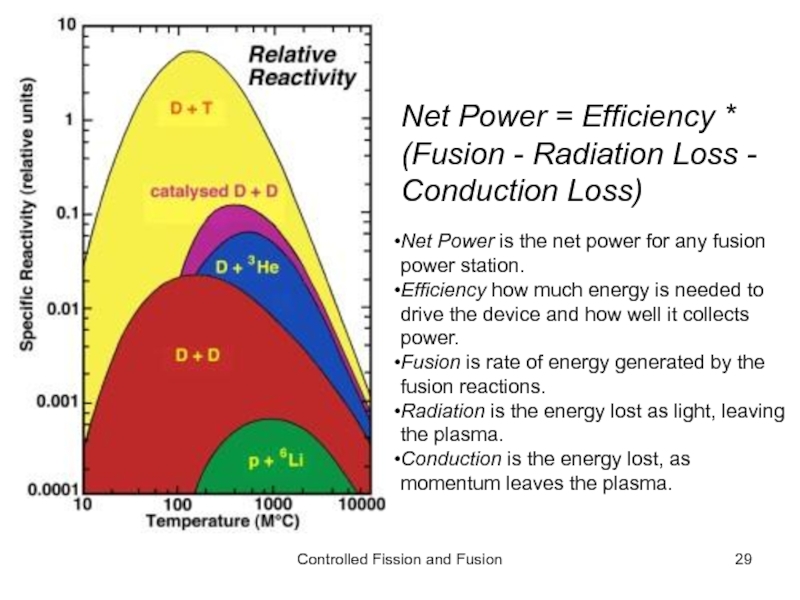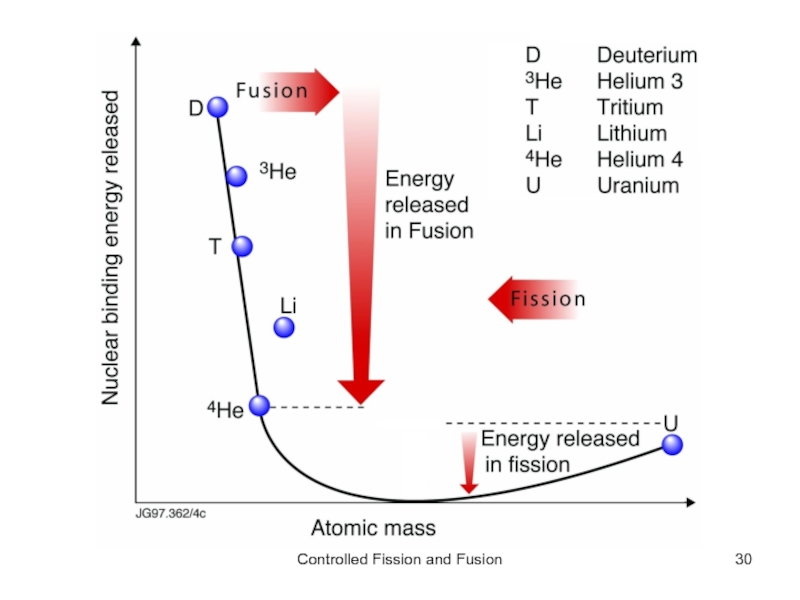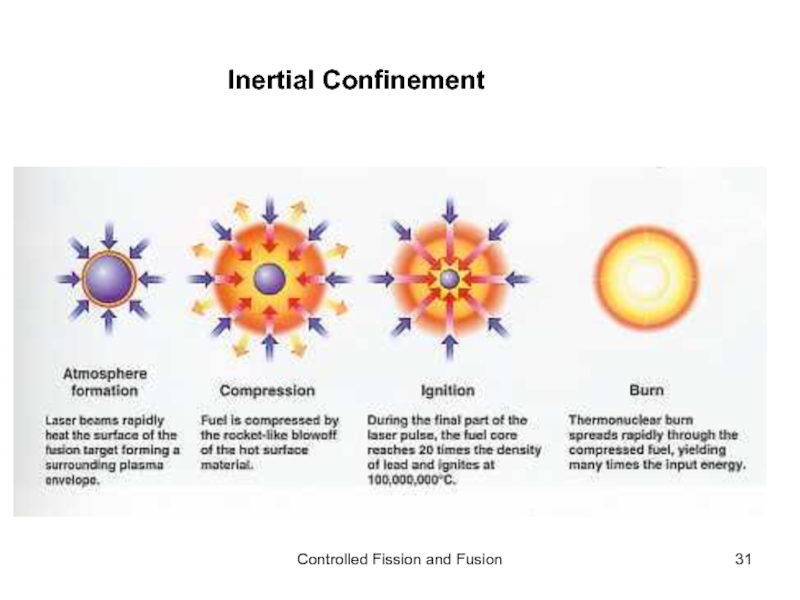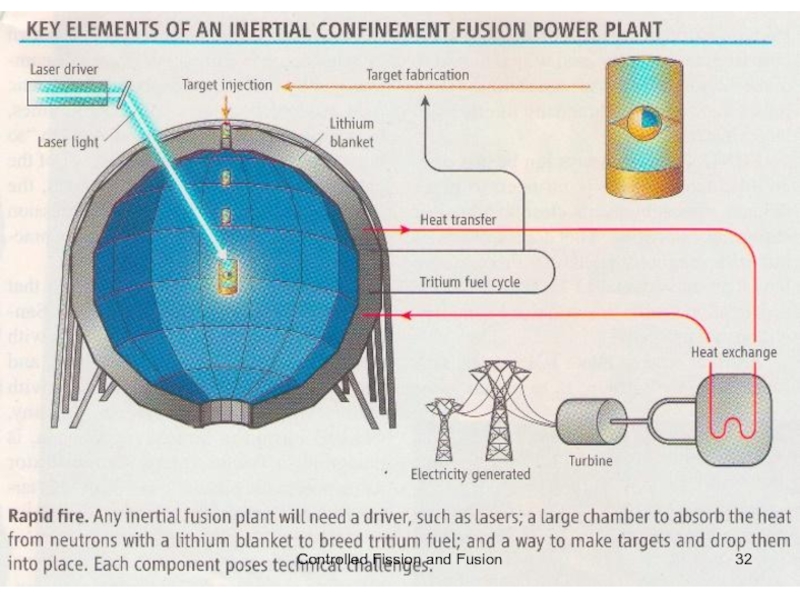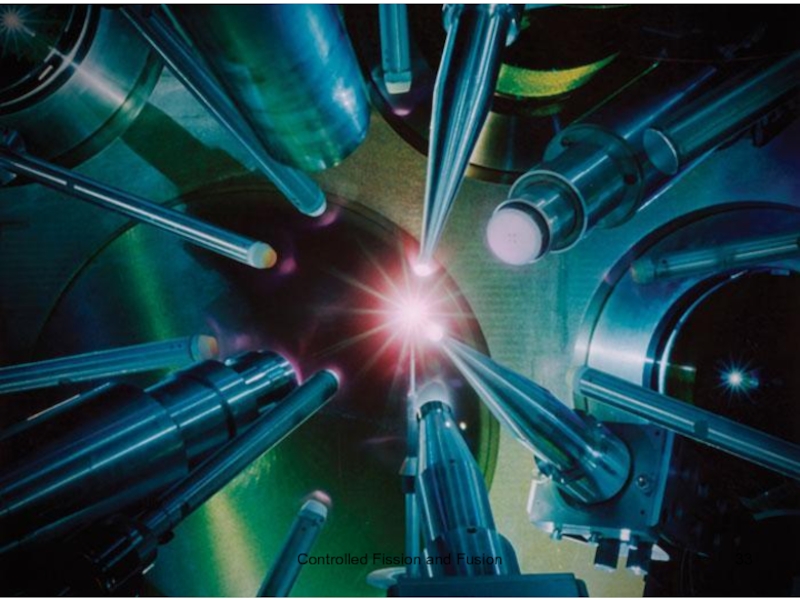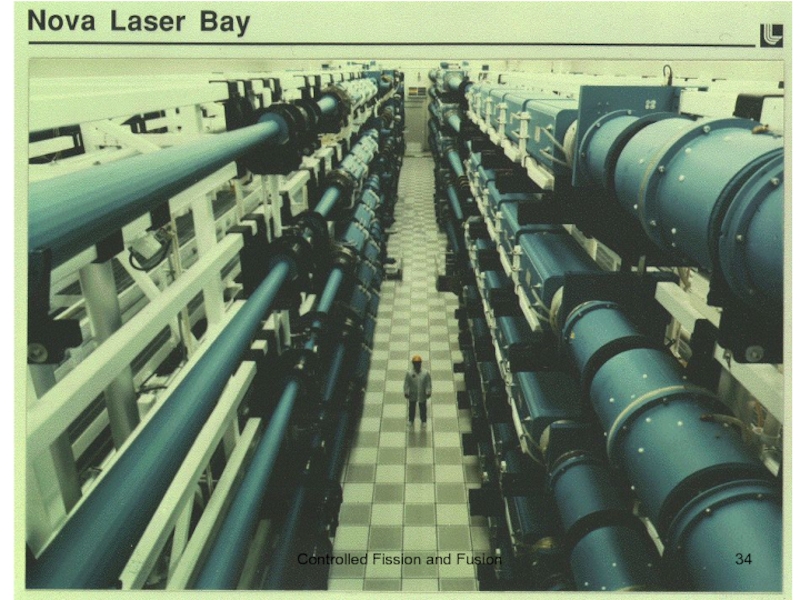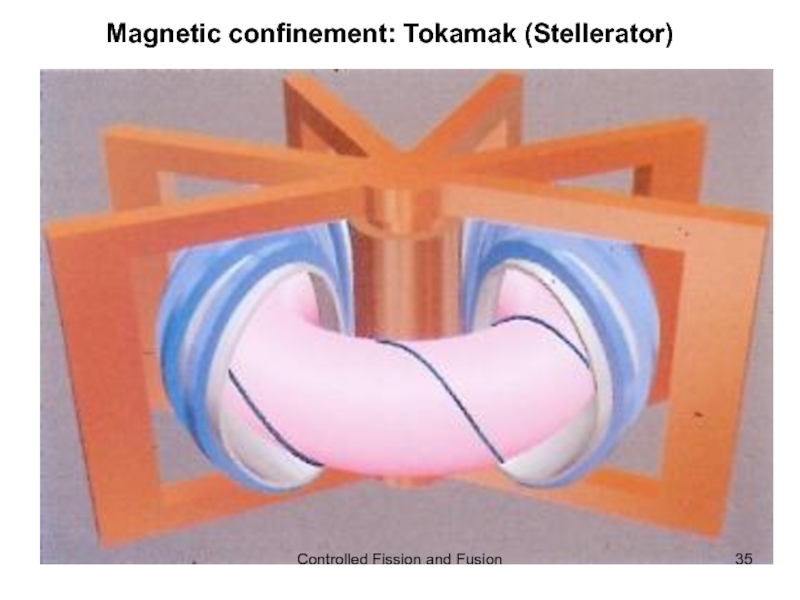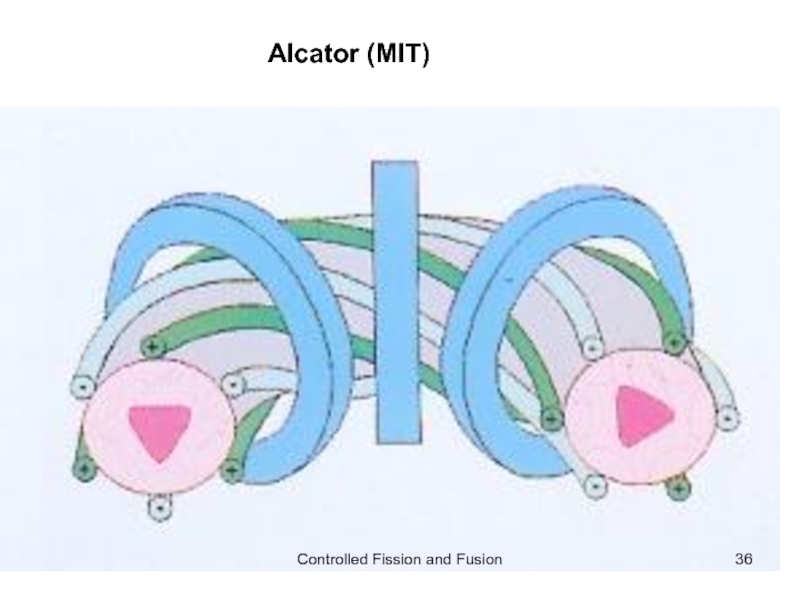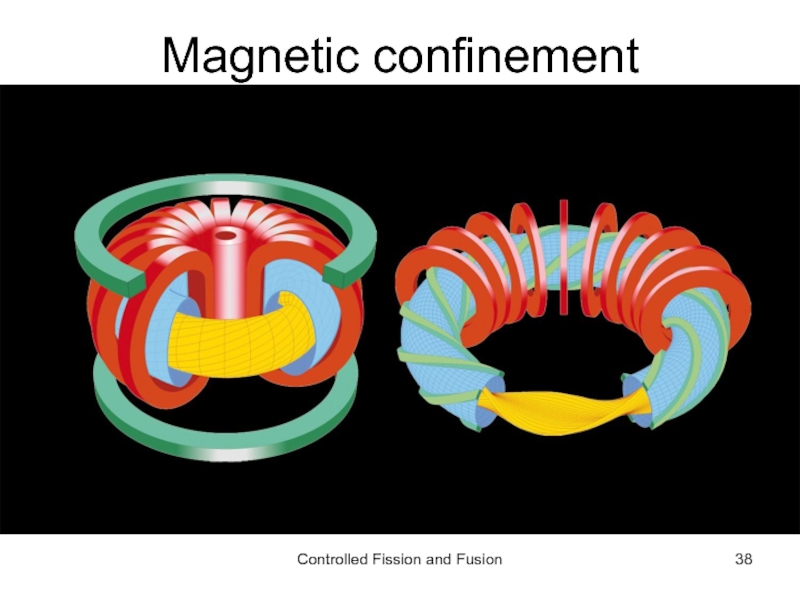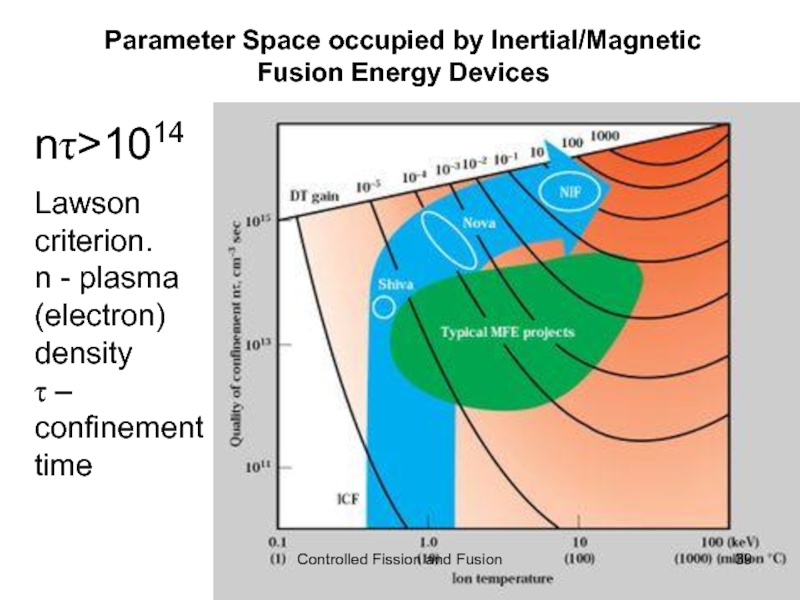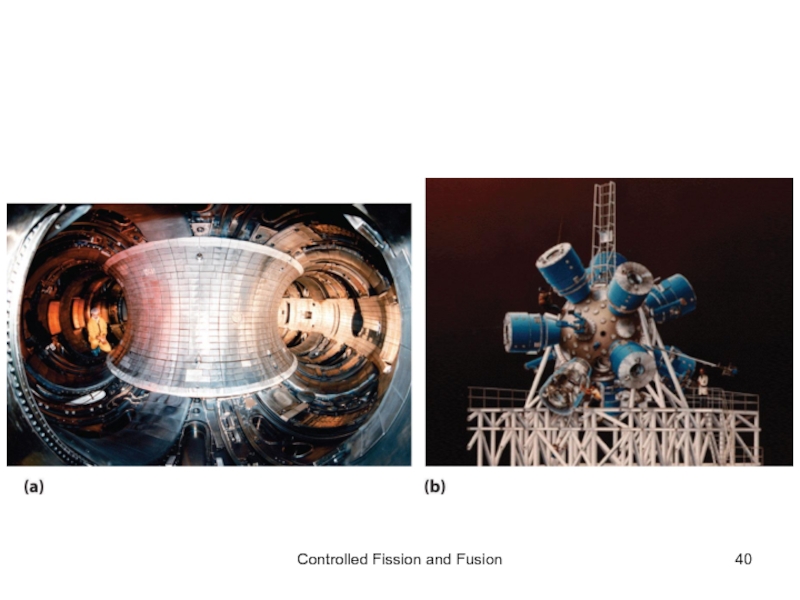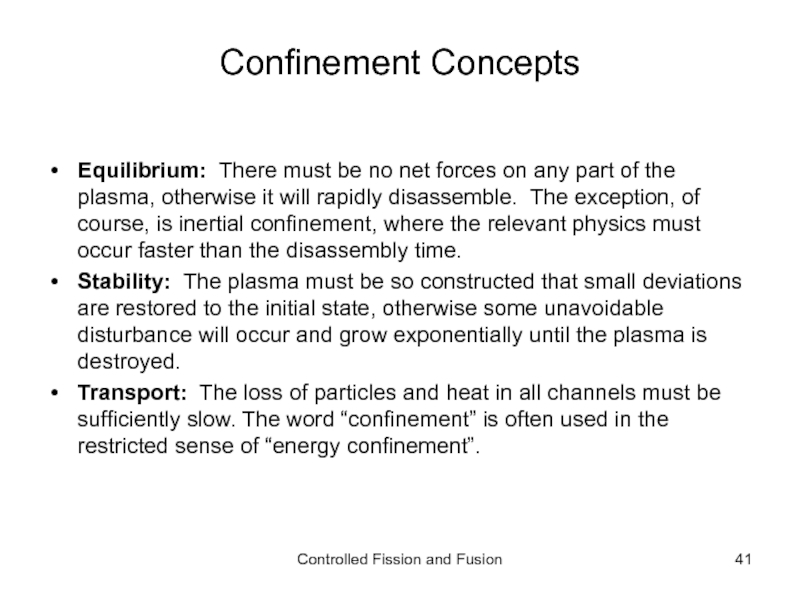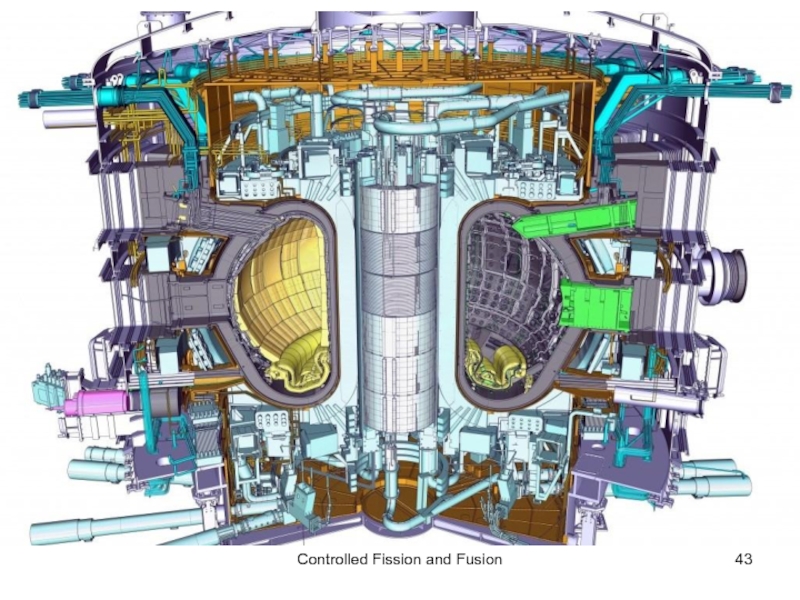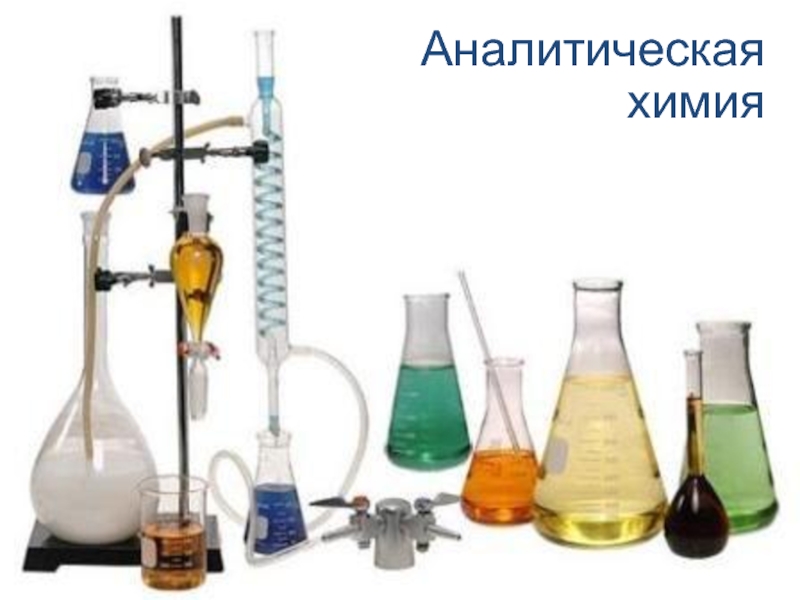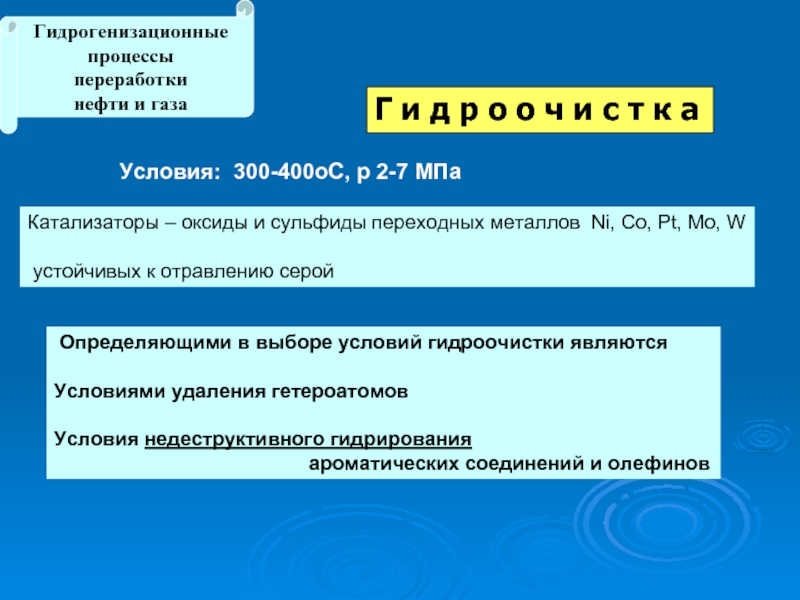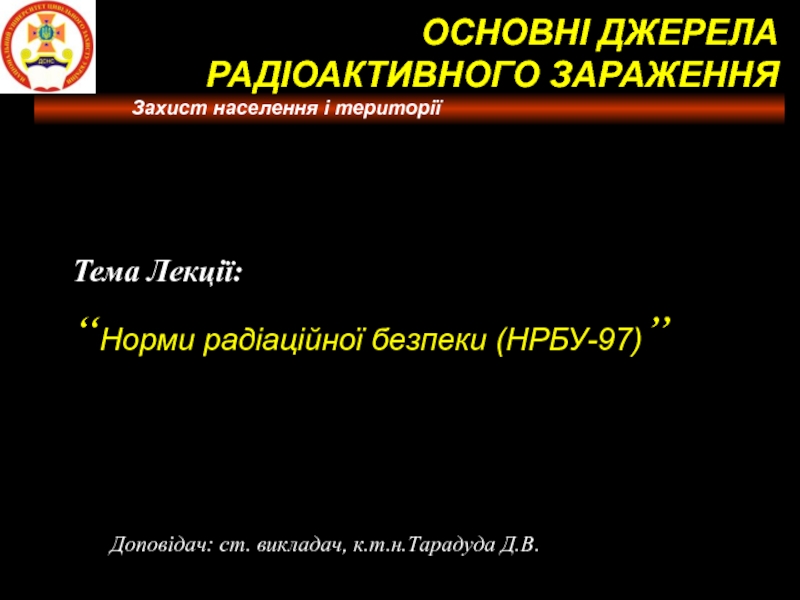- Главная
- Разное
- Дизайн
- Бизнес и предпринимательство
- Аналитика
- Образование
- Развлечения
- Красота и здоровье
- Финансы
- Государство
- Путешествия
- Спорт
- Недвижимость
- Армия
- Графика
- Культурология
- Еда и кулинария
- Лингвистика
- Английский язык
- Астрономия
- Алгебра
- Биология
- География
- Детские презентации
- Информатика
- История
- Литература
- Маркетинг
- Математика
- Медицина
- Менеджмент
- Музыка
- МХК
- Немецкий язык
- ОБЖ
- Обществознание
- Окружающий мир
- Педагогика
- Русский язык
- Технология
- Физика
- Философия
- Химия
- Шаблоны, картинки для презентаций
- Экология
- Экономика
- Юриспруденция
Nuclear Energy, Controlled Fission and Fusion 2016 презентация
Содержание
- 1. Nuclear Energy, Controlled Fission and Fusion 2016
- 2. Fission Break into parts Decay Controlled Fission and Fusion
- 3. Atomic Structure Operation of a nuclear reactor
- 4. Controlled Fission and Fusion
- 5. Controlled Fission and Fusion
- 6. Energy/Mass Equivalence E=mc2 c = 3x1010cm/s
- 7. Binding Energy (Table 2.4) B.E./A = 931/A
- 8. Binding Energy Controlled Fission and Fusion
- 9. Controlled Fission and Fusion On average B.E. = 7.5-8.5 Mev per nucleon
- 10. Radioactivity Unstable elements; from Z=84-92 Unstable nucleus
- 11. The Fission Process Occurs only with nuclei
- 12. U-235 →Fission product A + Fission product
- 13. Radioactive Decay of Uranium Controlled Fission and Fusion
- 14. V Controlled Fission and Fusion
- 15. Controlled Fission and Fusion
- 16. Schematic Representation of Nuclear Reactor System Controlled Fission and Fusion
- 17. Controlled Fission and Fusion
- 18. Controlled Fission and Fusion
- 19. Specifics of Light water reactors - LWR
- 20. New NPP for Armenia 1000MWe; $5billion Metzamorenergatom,
- 21. Controlled Fission and Fusion
- 22. Controlled Fission and Fusion
- 23. PWR animation Controlled Fission and Fusion
- 24. Three types of reactors (for others see
- 25. Controlled Fission and Fusion
- 26. Fusion Merging of nuclei = Fusing nuclei together Controlled Fission and Fusion
- 27. 165,000 TW of sunlight hit the earth
- 28. Controlled Fusion Controlled Fission and Fusion
- 29. Controlled Fission and Fusion Net Power =
- 30. Controlled Fission and Fusion
- 31. Inertial Confinement Controlled Fission and Fusion
- 32. Controlled Fission and Fusion
- 33. Controlled Fission and Fusion
- 34. Controlled Fission and Fusion
- 35. Magnetic confinement: Tokamak (Stellerator) Controlled Fission and Fusion
- 36. Alcator (MIT) Controlled Fission and Fusion
- 37. Controlled Fission and Fusion
- 38. Magnetic confinement Controlled Fission and Fusion
- 39. Parameter Space occupied by Inertial/Magnetic Fusion Energy
- 40. Controlled Fission and Fusion
- 41. Confinement Concepts Equilibrium: There must be no
- 42. ITER International Thermonuclear Experimental Reactor, and is
- 43. ITER Controlled Fission and Fusion
- 44. ITER Controlled Fission and Fusion
Слайд 3Atomic Structure
Operation of a nuclear reactor depends upon various interactions of
protons (p); neutrons (n); electrons (e)
protons or neutrons = nucleons
- Atomic number Z= # of protons (H=1, He=2…U=92)
- Mass number A, # of nucleons, A=p+n=Z+n or n=A-Z
- Isotopes – same Z but different A
e.g. U – 234, 235, 238
U (235) = 92p+143n
Controlled Fission and Fusion
Слайд 6Energy/Mass Equivalence
E=mc2 c = 3x1010cm/s = 3x108m/s
E (joules) = m(kg)
E (kWh) = m(kg) x 25 x 10 9
1 kg = 25 Bn kWh ≈ 5 x Armenian electric power consumption.
Electron volt unit = 1.6 x 10-19 joules
1 Mev = 1.6 x 10-13 joules
E (Mev) = m(kg) x 9x1016/1.6x10-13 = 5.6x1029 m(kg)
E (Mev) = m(g) x 9x1012/1.6x10-13 = 5.6x1026 m(kg)
Controlled Fission and Fusion
Слайд 7Binding Energy (Table 2.4)
B.E./A = 931/A [ZmH + mn (A-Z) –
931 is equivalent to 5.6x1026 divided by Avogadro No. = 6.02x1023
mH = 1.008; mn = 1.009
M = in amu (atomic mass unit)
1 amu = 1.660 x 10-24 gm
Controlled Fission and Fusion
Слайд 10Radioactivity
Unstable elements; from Z=84-92
Unstable nucleus emits characteristic particles (radiation)
α -
The fission process is one such decay or splitting of the unstable atom such as uranium.
Controlled Fission and Fusion
Слайд 11The Fission Process
Occurs only with nuclei of high Z (and mass)
Only
U-233, 235 and Pu-239, called fissile nuclides
Of these only U-235 occurs in nature. The other two are generated by neutron capture
Fission releases large amount of energy and creates a chain reaction.
Controlled Fission and Fusion
Слайд 12U-235 →Fission product A + Fission product B + Energy
92p +143n
92p + 143n → A and B + 235 x 8.5 Mev
Subtracting the two B.E. expressions
U-235 → fission products + 210 Mev
Thus fission of one U-235 nucleus releases 200 Mev energy compared to C(12) combustion releasing 4ev
Ergo, U-235 yields 2.5 million times more energy than same weight of carbon
[or, 1 lb of U-235 =1400 tons of 13,000 Btu/lb. coal]
Controlled Fission and Fusion
Слайд 19Specifics of Light water reactors - LWR
Uranium oxide, enriched to
Moderator and coolant, purified ordinary water; heavy water; graphite.
Control rods: neutron absorbing-Cd, Hf, Boron
Steam generator and Containment
PWR – water coolant at 150 atm; heated to 325C superheated water generates steam in a second loop and operates a turbine
BWR – boils within the core at lower pressure; piped directly to turbine generator
LWR are re-fueled every 12-18 months, where 25% of the fuel is replaced
Controlled Fission and Fusion
Слайд 20New NPP for Armenia
1000MWe; $5billion
Metzamorenergatom, 50-50Russian-Armenian joint stock company; will fund
VVER-1000,model V-392; 60yr life
If 60yr life, retail price of 1 kWh < 7 cents.
Fuel type is UO2
Controlled Fission and Fusion
Слайд 24Three types of reactors
(for others see handout)
1. Light and Heavy Water
a. LWR/PWR
b. LWR/BWR
(Medzamor is a PWR-VVER 440 Model)
2. Propulsion Reactors (PWR family)
Naval vessels / submarines
3. Liquid metal Cooled Fast Breeder Reactors (LMFBR)
Produces more fuel than it consumes
(U-238 absorbs neutrons and converts it to PU-239)
Molten metal is the coolant liquid
Controlled Fission and Fusion
Слайд 27165,000 TW
of sunlight
hit the earth
every day
“God’s version of a fusion reactor”
Controlled
Слайд 29Controlled Fission and Fusion
Net Power = Efficiency * (Fusion - Radiation
Net Power is the net power for any fusion power station.
Efficiency how much energy is needed to drive the device and how well it collects power.
Fusion is rate of energy generated by the fusion reactions.
Radiation is the energy lost as light, leaving the plasma.
Conduction is the energy lost, as momentum leaves the plasma.
Слайд 39Parameter Space occupied by Inertial/Magnetic Fusion Energy Devices
nτ>1014
Lawson criterion.
n - plasma
τ – confinement time
Controlled Fission and Fusion
Слайд 41Confinement Concepts
Equilibrium: There must be no net forces on any part
Stability: The plasma must be so constructed that small deviations are restored to the initial state, otherwise some unavoidable disturbance will occur and grow exponentially until the plasma is destroyed.
Transport: The loss of particles and heat in all channels must be sufficiently slow. The word “confinement” is often used in the restricted sense of “energy confinement”.
Controlled Fission and Fusion
Слайд 42ITER
International Thermonuclear Experimental Reactor, and is also Latin for "the way")
Cadarache
Controlled Fission and Fusion
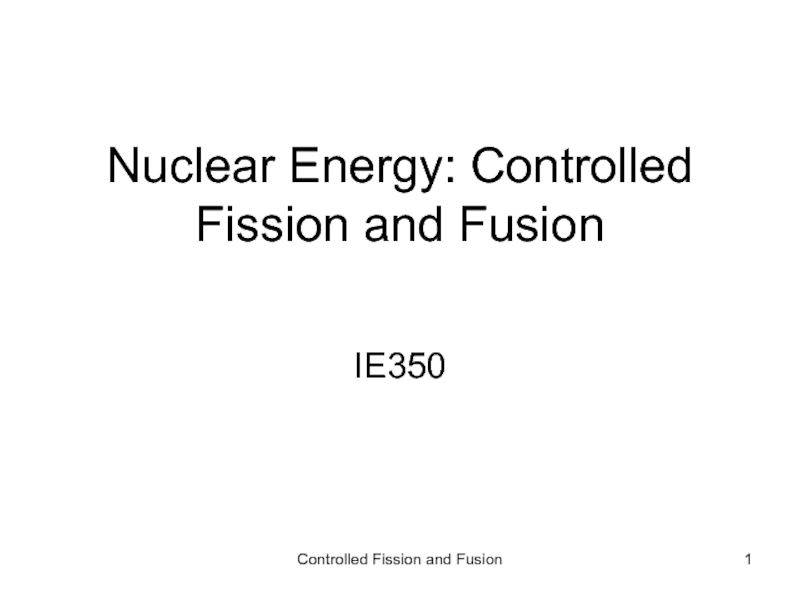
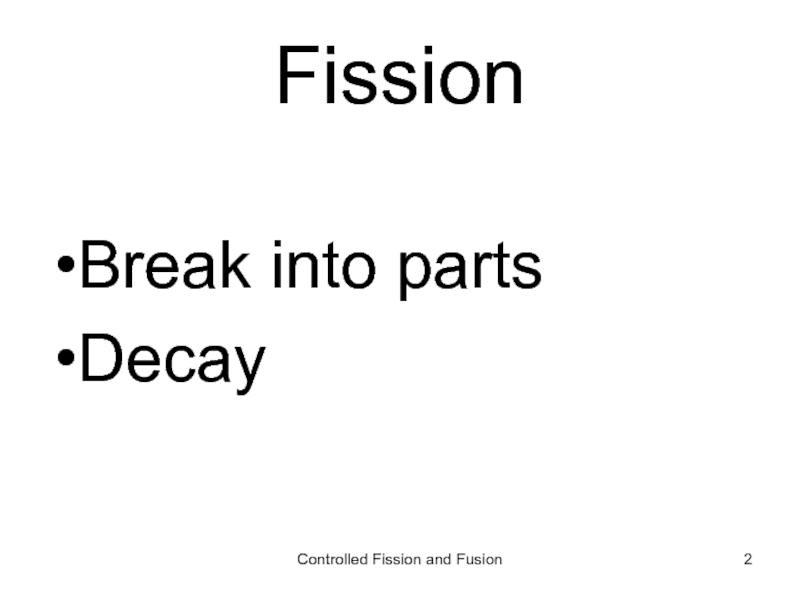
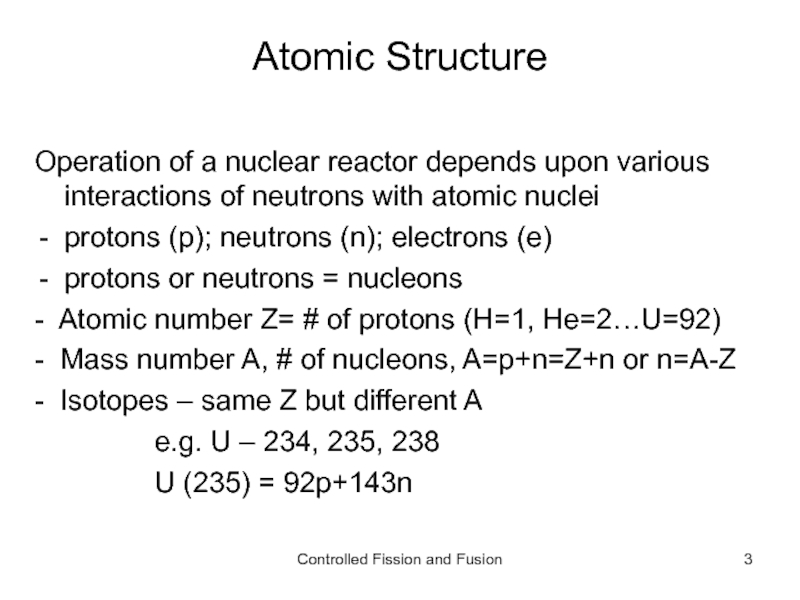
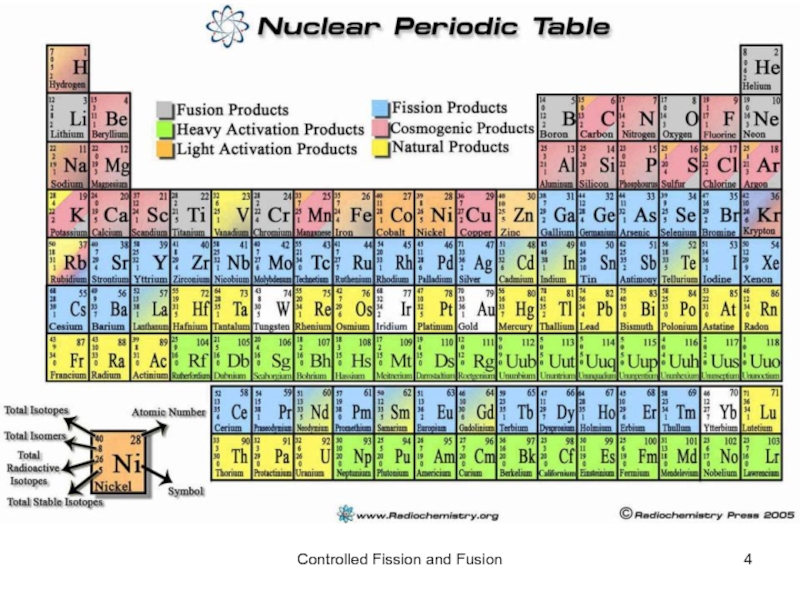
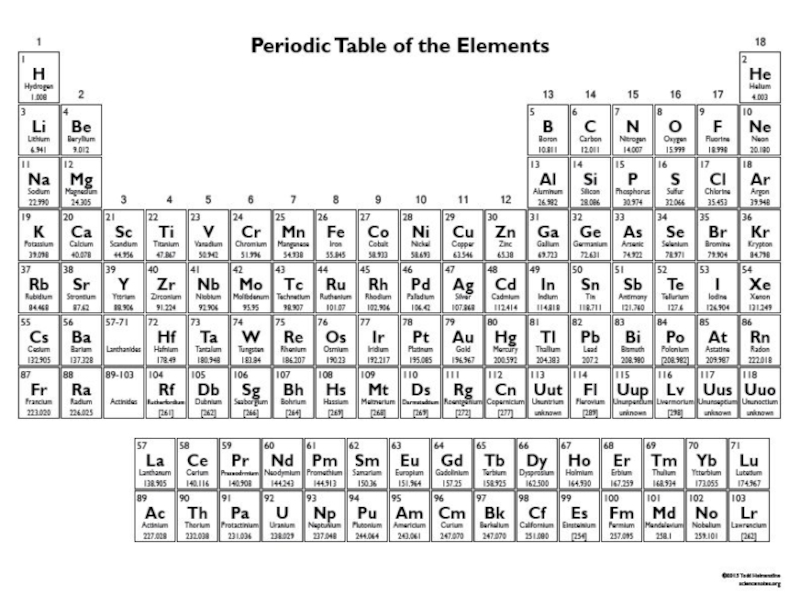
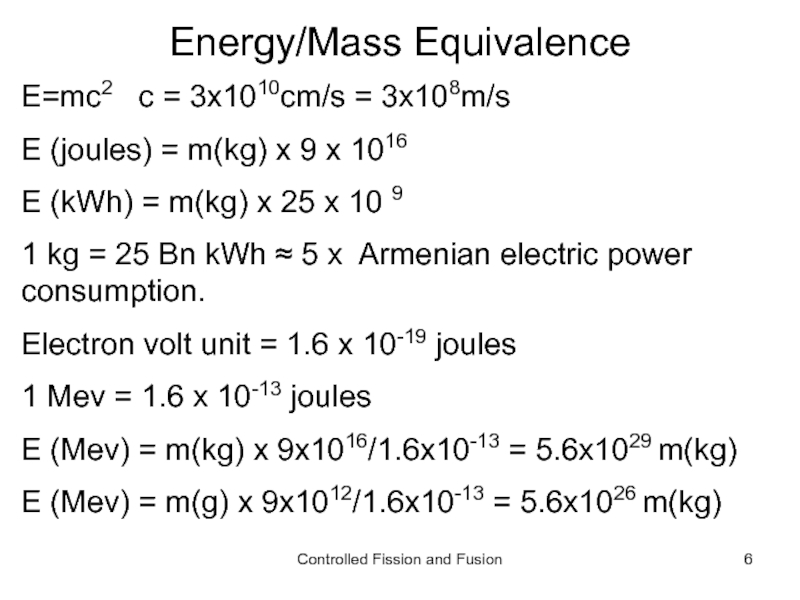
![Binding Energy (Table 2.4)B.E./A = 931/A [ZmH + mn (A-Z) – M] Mev/nucleon931 is equivalent](/img/tmb/2/148962/0fd825705c1678fa47e0907a706a7ff6-800x.jpg)
